Abstract
In this study, young children with severe and moderate handicaps were taught to generalize play responses. A multiple baseline across responses design, replicated with four children, was used to assess the effects of generalization training within four sets of toys on generalization to untrained toys from four other sets. The responses taught were unique for each set of toys. Across the four participants, training to generalize within-toy sets resulted in complete between-class generalization in 11 sets, partial generalization in 3 sets, and no generalization in 2 sets. No generalization occurred to another class of toys that differed from the previous sets in that they produced a reaction to the play movement (e.g., pianos). Implications for conducting research using strategies based on class interrelationships in training contexts are discussed.
Full text
PDF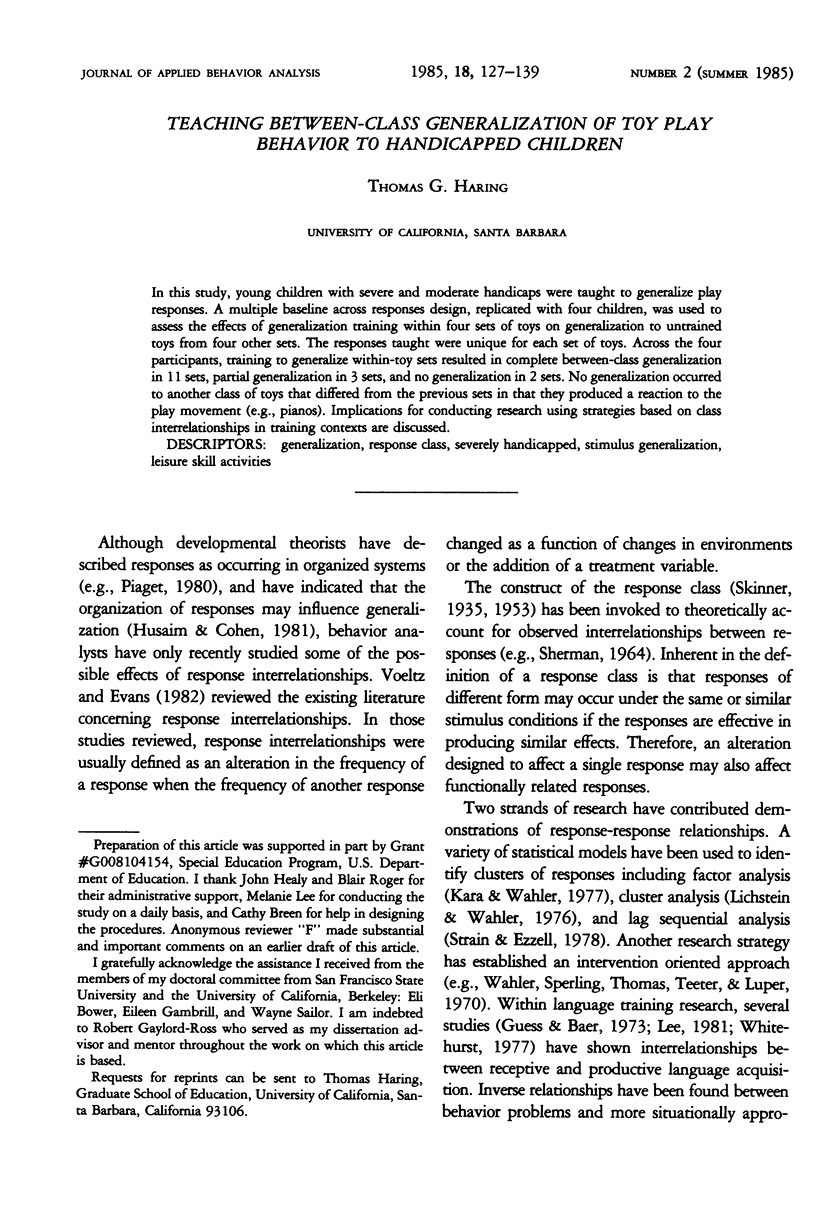
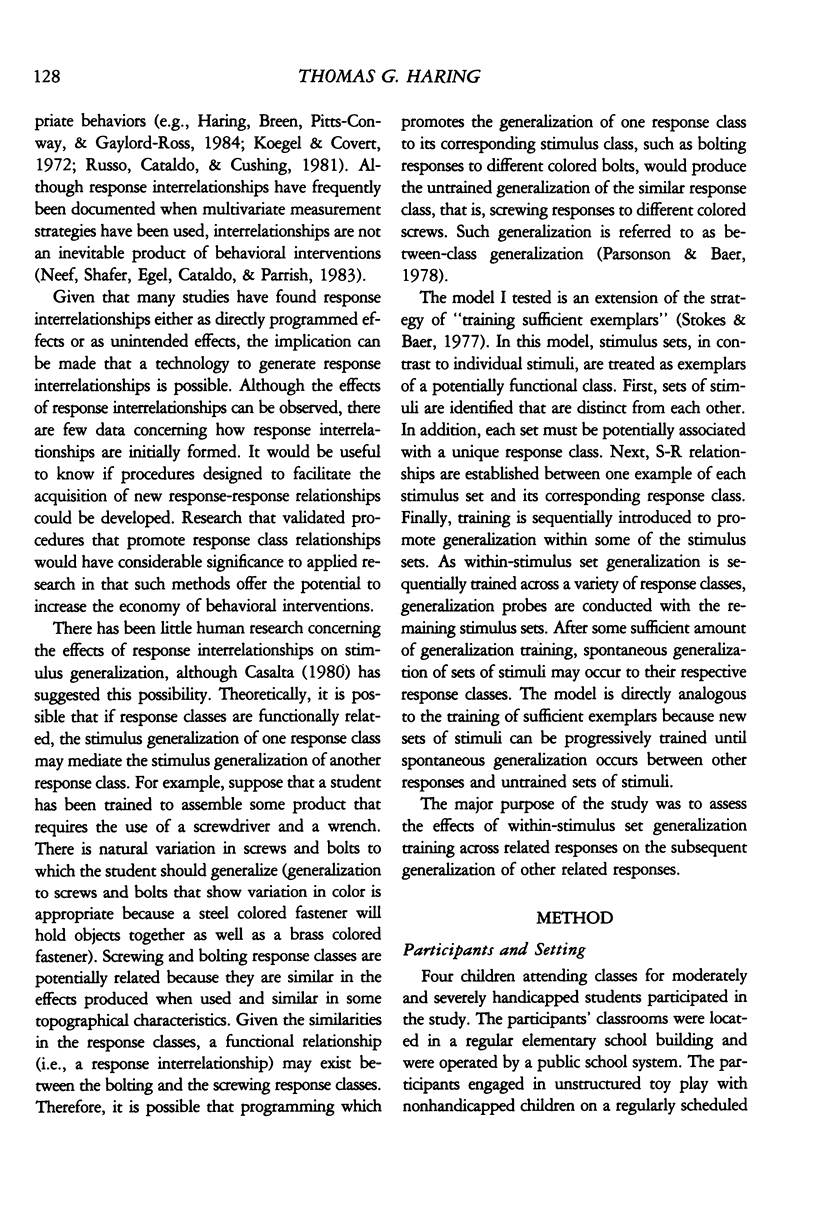
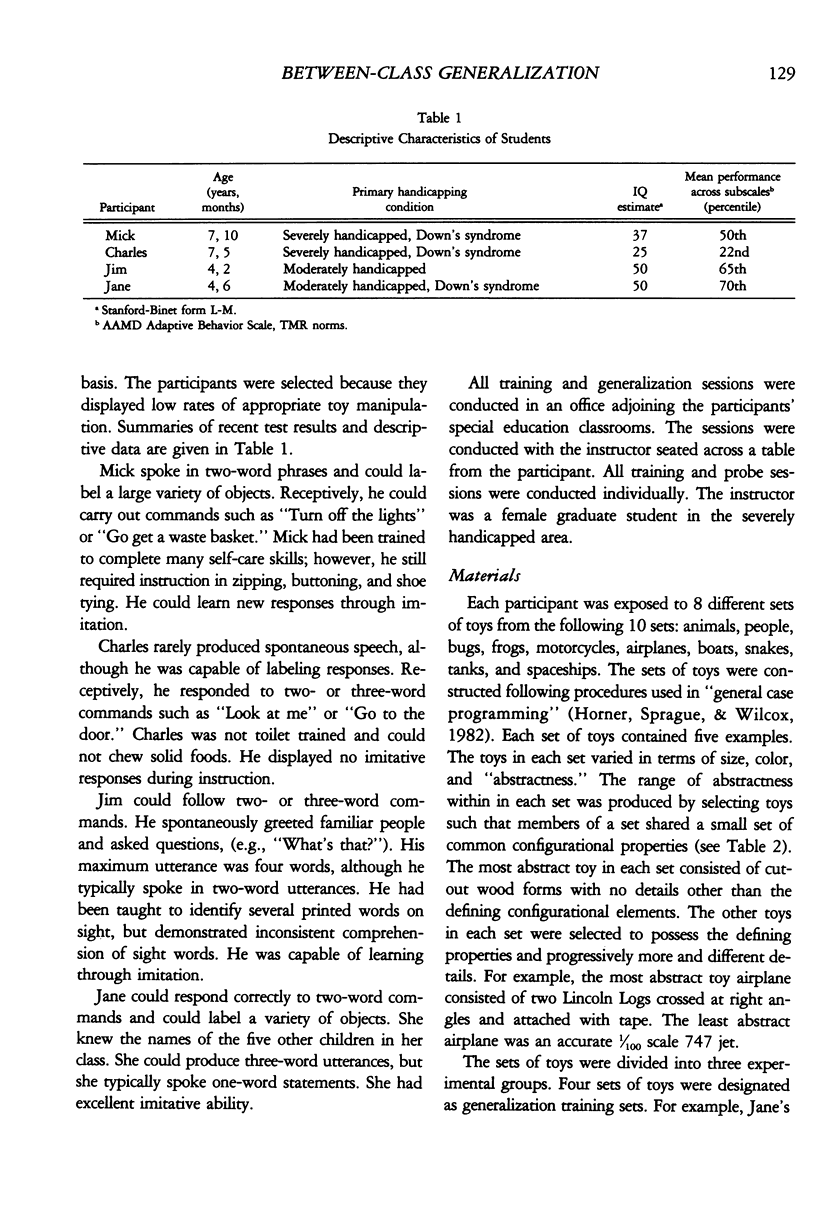
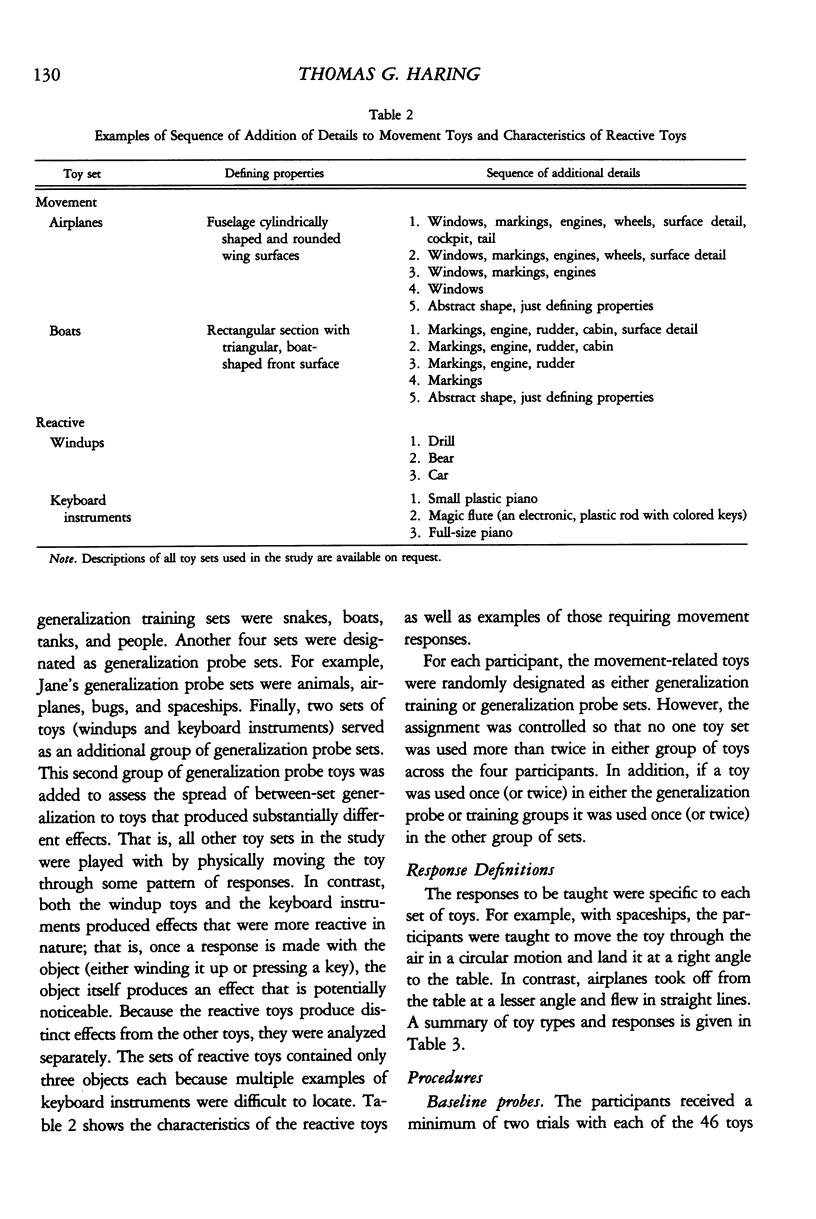
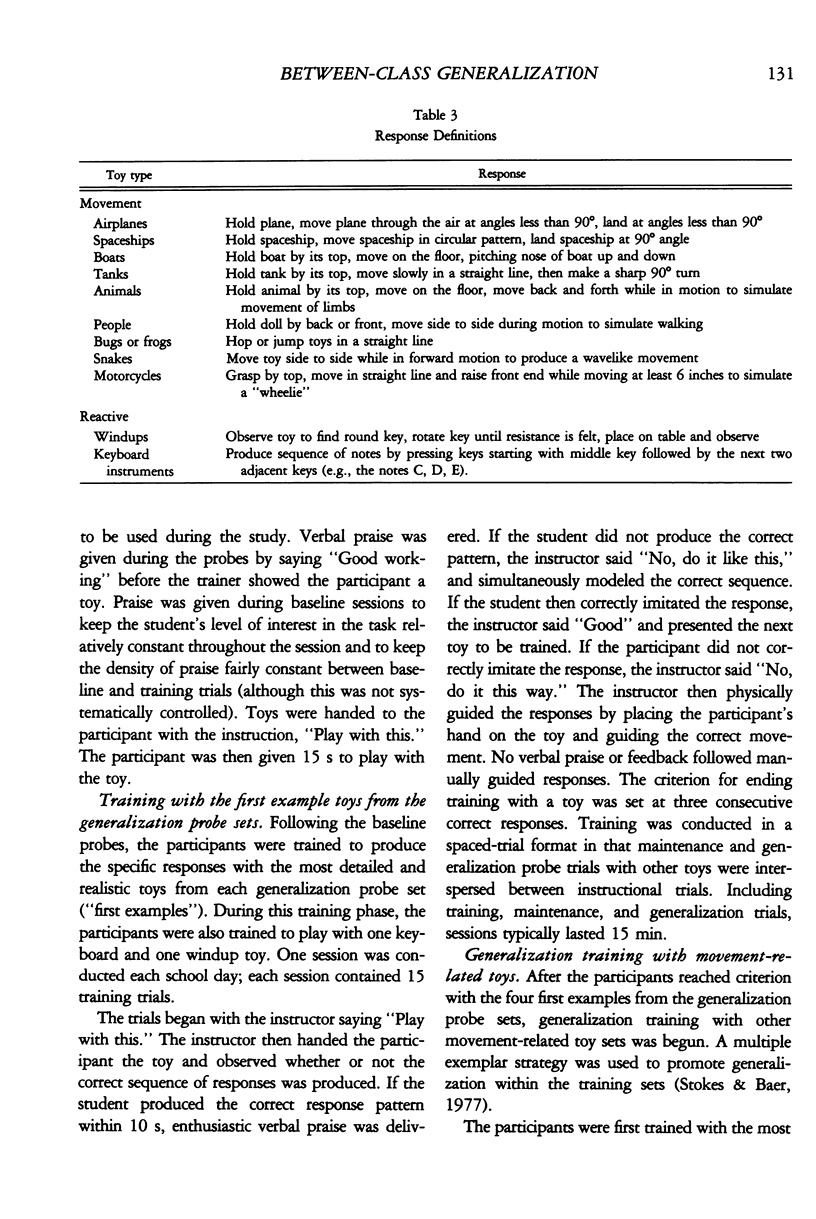
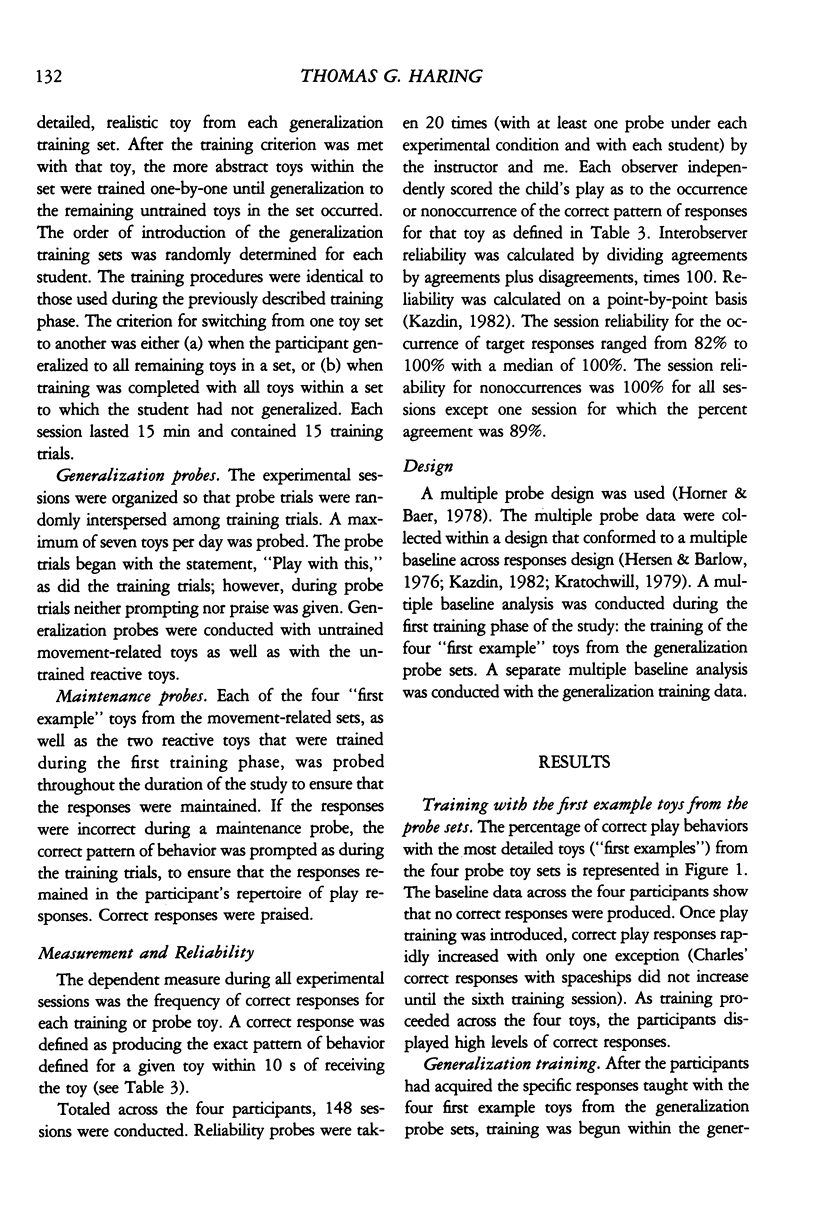
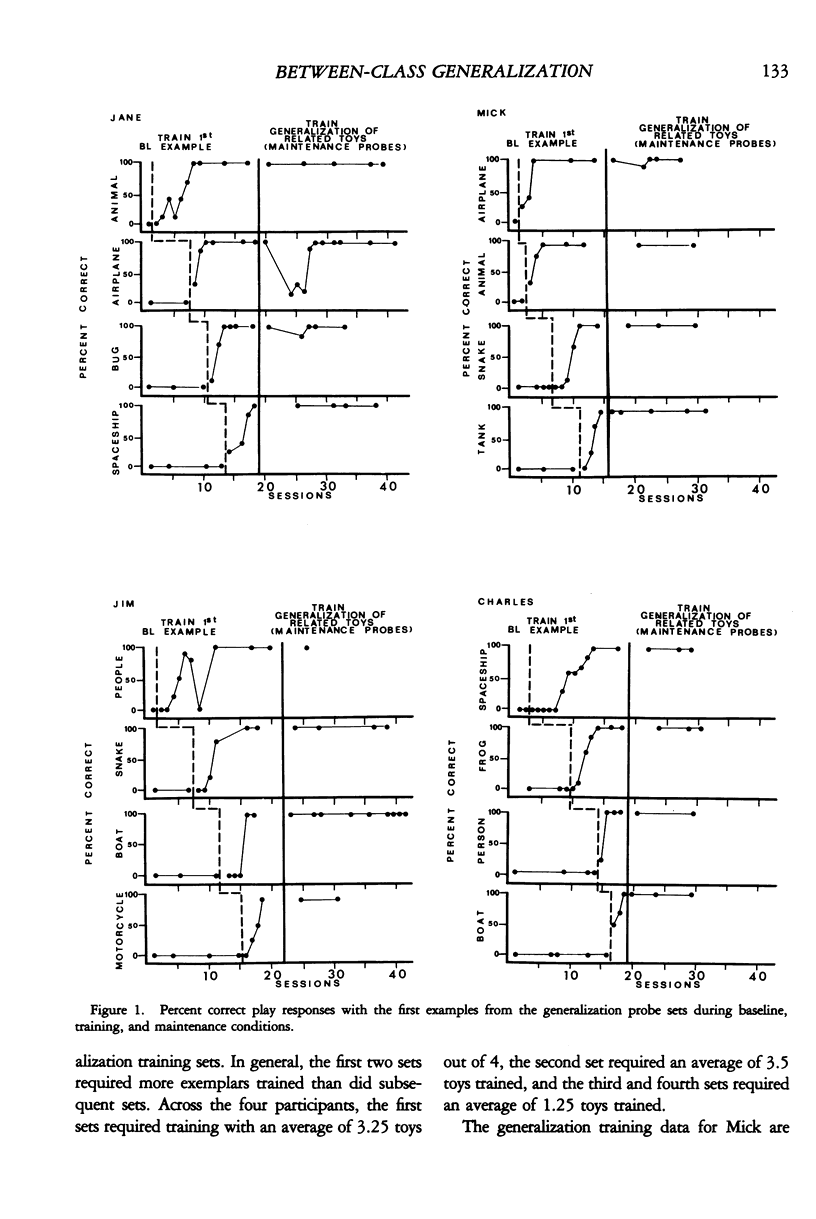
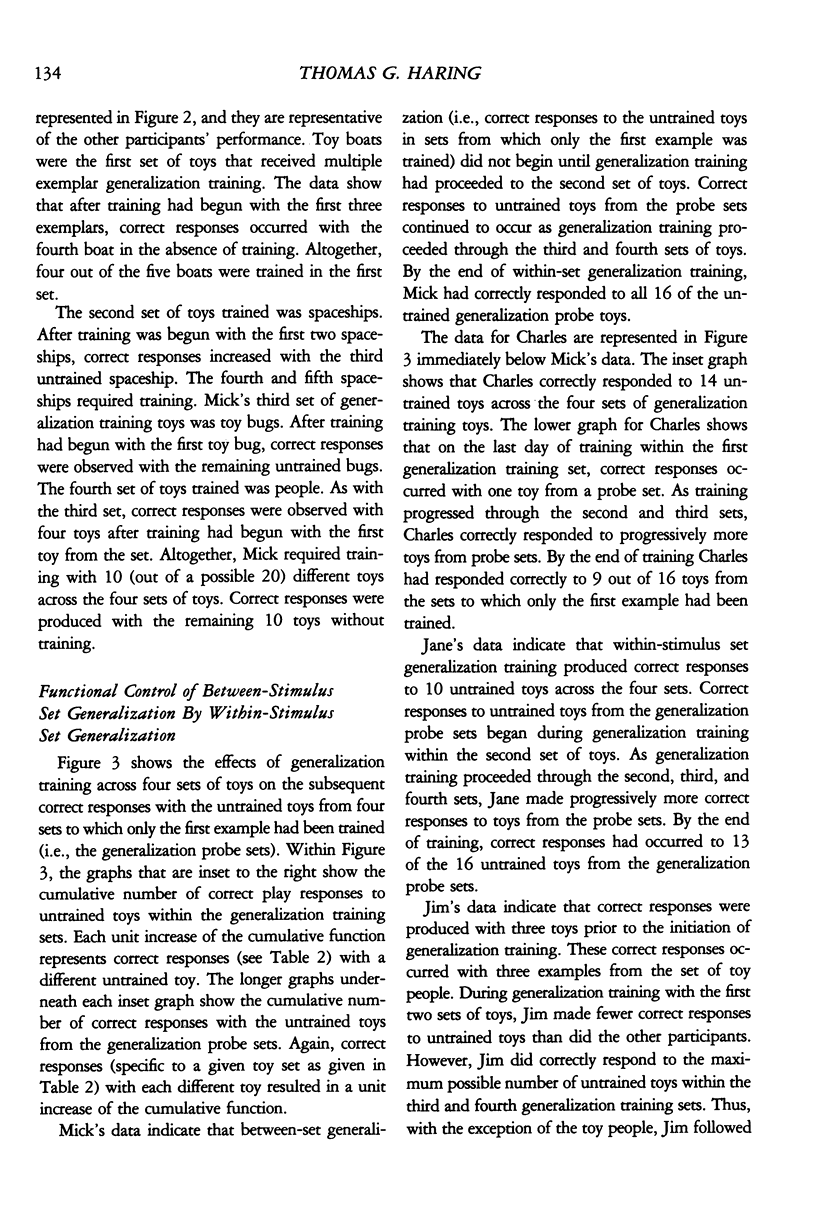
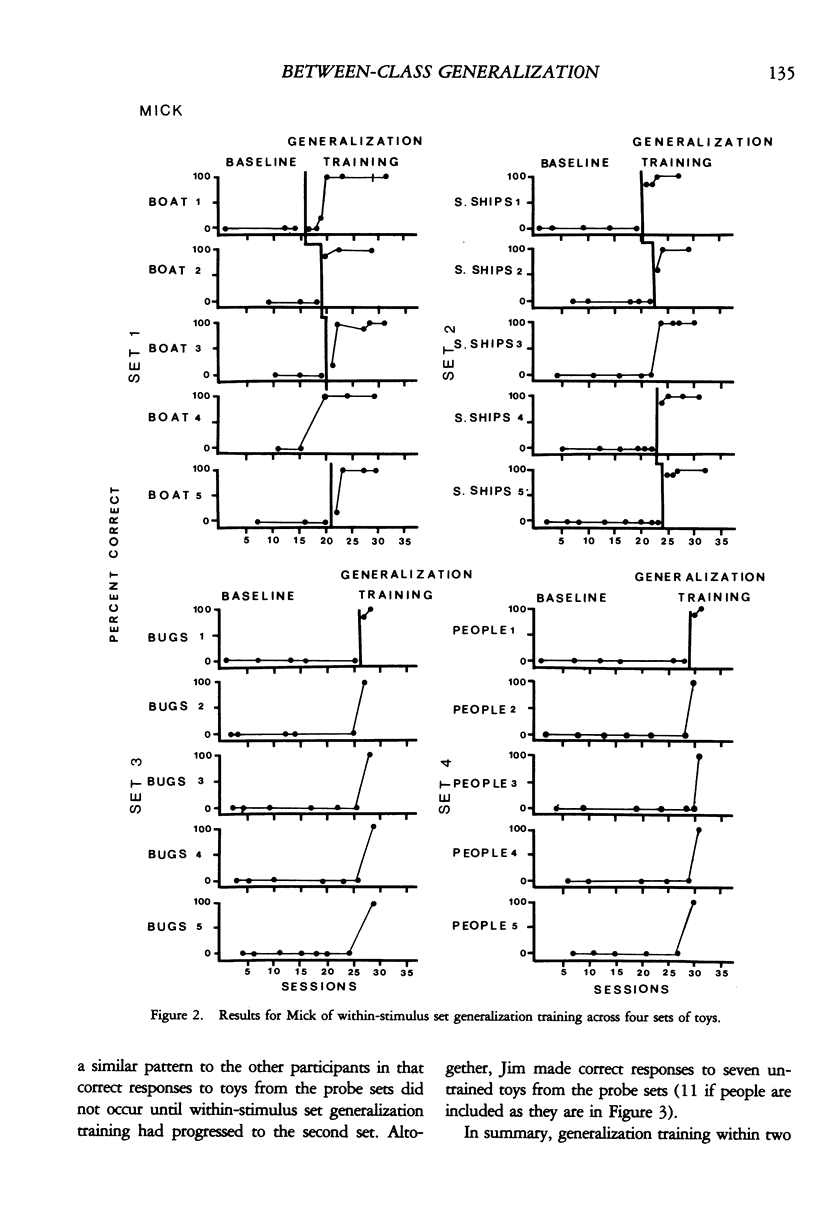
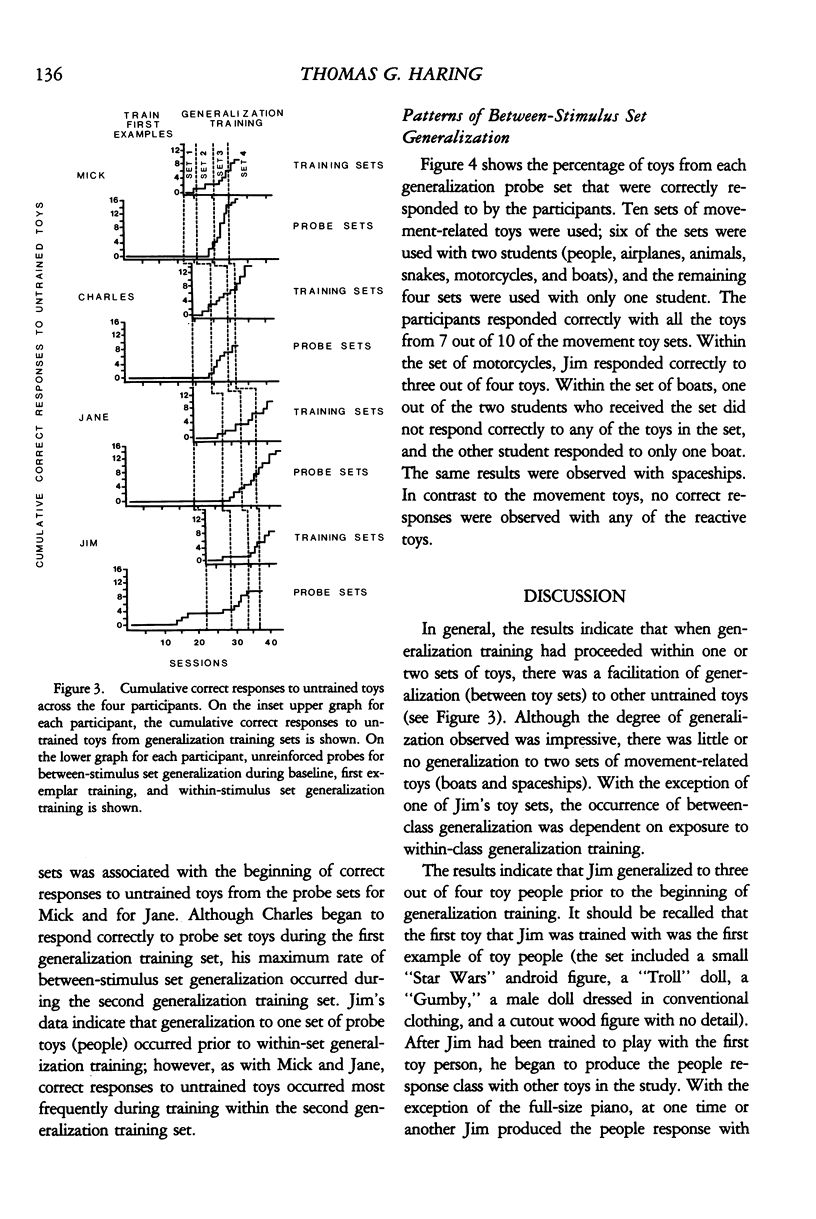
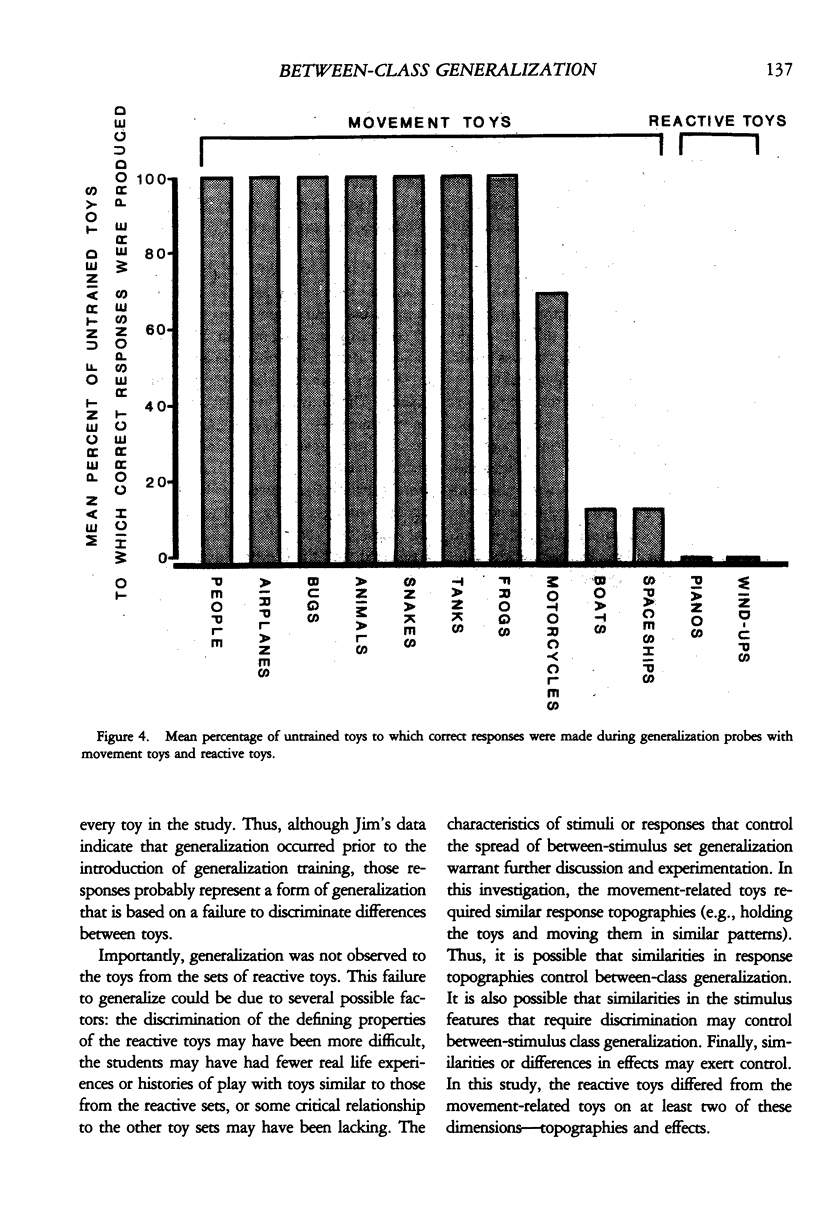
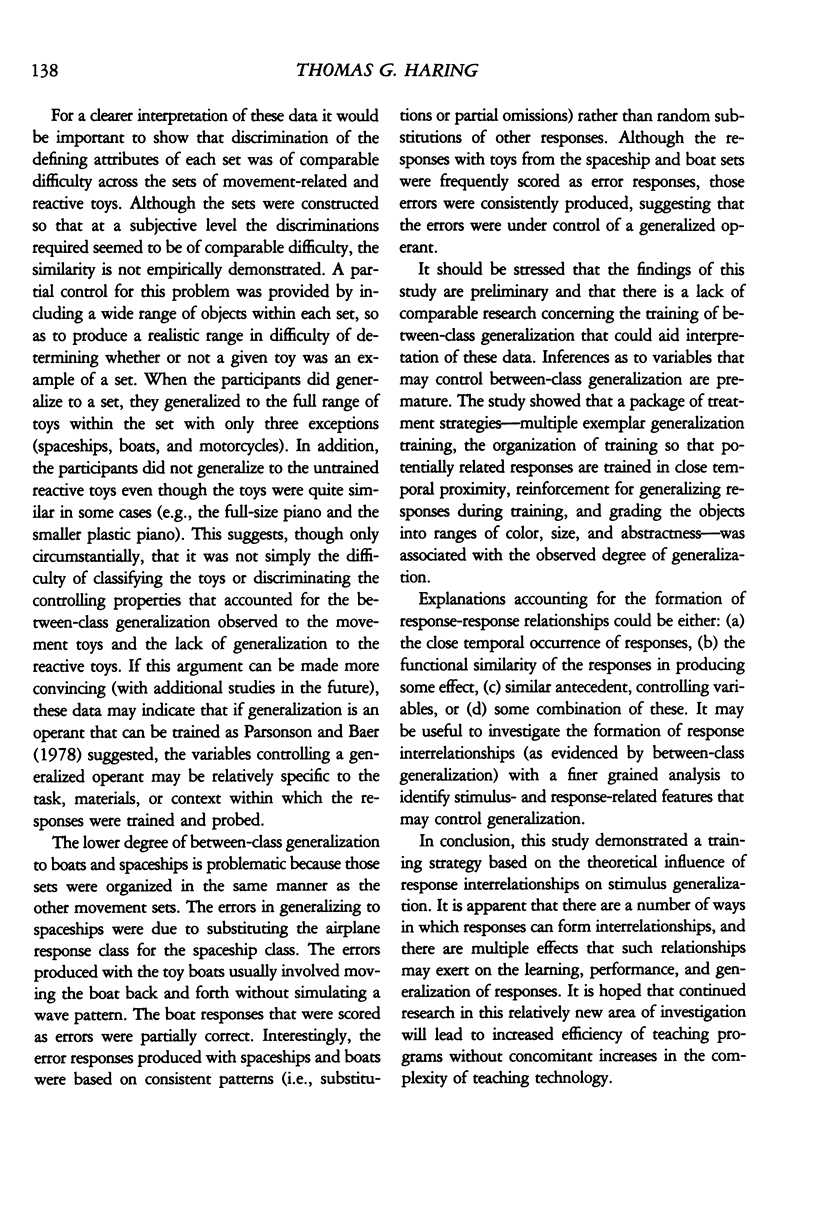
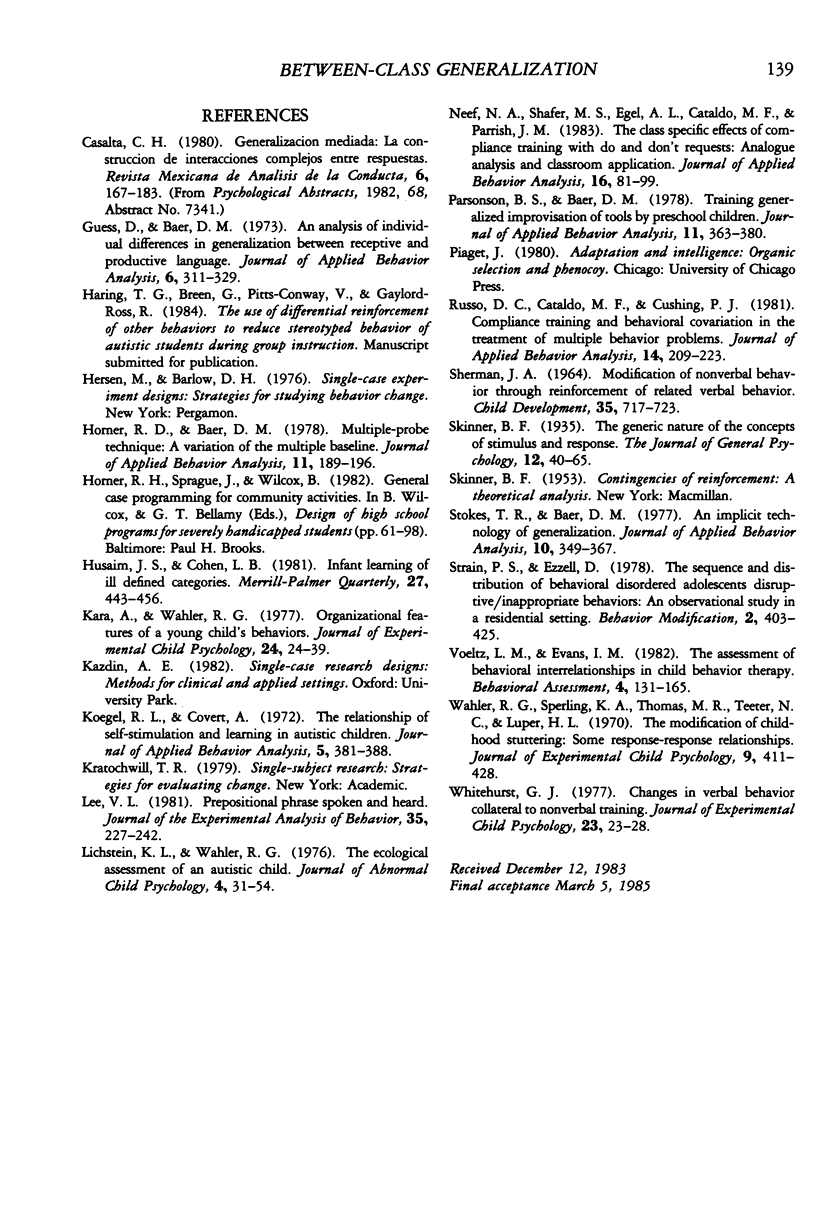
Selected References
These references are in PubMed. This may not be the complete list of references from this article.
- Guess D., Baer D. M. An analysis of individual differences in generalization between receptive and productive language in retarded children. J Appl Behav Anal. 1973 Summer;6(2):311–329. doi: 10.1901/jaba.1973.6-311. [DOI] [PMC free article] [PubMed] [Google Scholar]
- Horner R. D., Baer D. M. Multiple-probe technique: a variation on the multiple baseline. J Appl Behav Anal. 1978 Spring;11(1):189–196. doi: 10.1901/jaba.1978.11-189. [DOI] [PMC free article] [PubMed] [Google Scholar]
- Koegel R. L., Covert A. The relationship of self-stimulation to learning in autistic children. J Appl Behav Anal. 1972 Winter;5(4):381–387. doi: 10.1901/jaba.1972.5-381. [DOI] [PMC free article] [PubMed] [Google Scholar]
- Lee V. L. Prepositional phrases spoken and heard. J Exp Anal Behav. 1981 Mar;35(2):227–242. doi: 10.1901/jeab.1981.35-227. [DOI] [PMC free article] [PubMed] [Google Scholar]
- Lichstein K. L., Wahler R. G. The ecological assessment of an autistic child. J Abnorm Child Psychol. 1976;4(1):31–54. doi: 10.1007/BF00917603. [DOI] [PubMed] [Google Scholar]
- Neef N. A., Shafer M. S., Egel A. L., Cataldo M. F., Parrish J. M. The class specific effects of compliance training with "do" and "don't" requests: analogue analysis and classroom application. J Appl Behav Anal. 1983 Spring;16(1):81–99. doi: 10.1901/jaba.1983.16-81. [DOI] [PMC free article] [PubMed] [Google Scholar]
- Parsonson B. S., Baer D. M. Training generalized improvisation of tools by preschool children. J Appl Behav Anal. 1978 Fall;11(3):363–380. doi: 10.1901/jaba.1978.11-363. [DOI] [PMC free article] [PubMed] [Google Scholar]
- Russo D. C., Cataldo M. F., Cushing P. J. Compliance training and behavioral covariation in the treatment of multiple behavior problems. J Appl Behav Anal. 1981 Fall;14(3):209–222. doi: 10.1901/jaba.1981.14-209. [DOI] [PMC free article] [PubMed] [Google Scholar]
- SHERMAN J. A. MODIFICATION OF NONVERBAL BEHAVIOR THROUGH REINFORCEMENT OF RELATED VERBAL BEHAVIOR. Child Dev. 1964 Sep;35:717–723. doi: 10.1111/j.1467-8624.1964.tb05211.x. [DOI] [PubMed] [Google Scholar]
- Stokes T. F., Baer D. M. An implicit technology of generalization. J Appl Behav Anal. 1977 Summer;10(2):349–367. doi: 10.1901/jaba.1977.10-349. [DOI] [PMC free article] [PubMed] [Google Scholar]
- Wahler R. G., Sperling K. A., Thomas M. R., Teeter N. C., Luper H. L. The modification of childhood stuttering: some response-response relationships. J Exp Child Psychol. 1970 Jun;9(3):411–428. doi: 10.1016/0022-0965(70)90028-7. [DOI] [PubMed] [Google Scholar]


